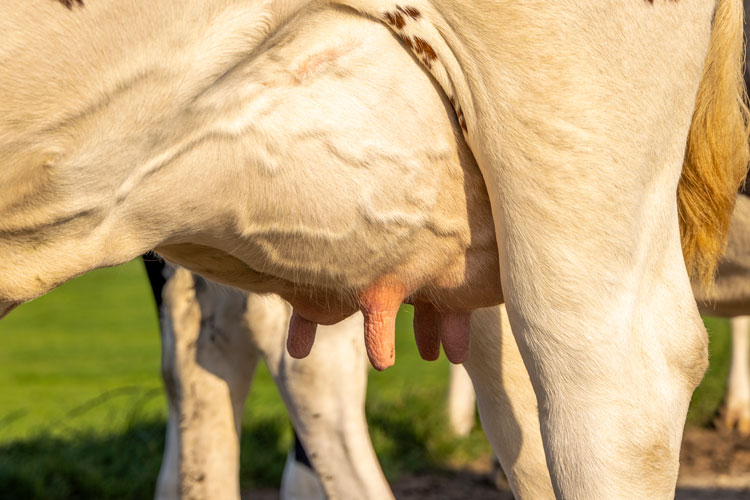
Subclinical mastitis, by definition, rarely gets noticed because it’s not visual. However, nearly 75 years ago, the California Mastitis Test (CMT) was introduced to help illuminate this mystery. Even equipped with this info, treatment of subclinical mastitis is rarely recommended during lactation due to the costs associated with milk discard and treatment. So many of these plastic paddles and bottles of purple solution sit collecting dust on the parlor cart.
Dairymen recognize when a fresh cow starts the lactation off right — everything seems to glide smoothly the remainder of the year. Research supports that when mastitis hits early, a cow’s productivity is negatively impacted over the entire lactation.
“We targeted Day 7 in lactation to prevent clinical infections in the future,” explained Zelmar Rodriguez, a professor of dairy veterinary medicine at Michigan State University. He joined the “Dairy Science Digest” podcast to discuss recently released research investigating effective management strategies using nisin to improve milk quality and economic outcomes of subclinical mastitis.
Stop subclinical mastitis early
Research suggests that subclinical mastitis in early lactation can often become chronic and develop into clinical mastitis, resulting in treatment. This can ultimately lead to an average of five days discarding milk.
“If we could stop the cycle before the chronic phase, there will be a greater economic return. That’s why we targeted very early intervention,” Rodriguez continued. He and his team evaluated a protocol implementing cowside CMT tests on all cows in the herd between four and 10 days in milk with the goal of identifying specific quarters with subclinical mastitis to treat with three tubes of nisin 12 hours apart. Quarters were positive if the result of the CMT was “trace,” understood to be approximately 400,000 somatic cells per milliliter.
This powerful cowside test works by binding to the contents of white blood cells in milk, commonly found in milk when there is an infection. It causes a gel to develop that indicates a positive subclinical case. While imperfect, this trusted test only results in a false positive 19% of the time.
Nisin is an antimicrobial peptide naturally produced by Lactococcus lactis that works against gram positive mastitis organisms by inhibiting growth. It is safe for human consumption and is commonly used as a preservative in the food industry to extend shelf life. Therefore, if approved by the Food and Drug Administration (FDA), treatment would not require a milk discard.
While gram positive pathogens are the most common cause of fresh cow mastitis, they only account for a portion of mastitis-causing organisms. Fresh cows also battle with Staph. aureus and gram-negative pathogens, which nisin would have no effectiveness toward.
“Treatment of these pathogens with nisin is not economically beneficial either because of high spontaneous cure rate (gram negative) or low efficacy (Staph. aureus),” Rodriguez explained.
An economic impact
The team calculated a positive economic benefit of treating CMT-positive quarters 93% of the time, averaging a $19 per cow net return.
The goal of antibiotic treatment is to clear mastitis-causing bacteria and prevent a more severe clinical case. The research team calculated the average cost of subclinical mastitis at $170 per case, while a clinical case averaged $521. This value varies due to age of the cow, stage of lactation, and organism causing the mastitis.
The FDA is currently reviewing the application of nisin as a treatment for subclinical mastitis. It’s anticipated to be available in the market by the end of 2024. Meanwhile, it is recommended that each farm begin a subclinical mastitis monitoring program for their fresh cows to determine the current prevalence and opportunities for prevention. Using CMT in addition to your monthly milk test somatic cell counts will help identify specific quarters with subclinical mastitis and even chronic cases if done periodically.
Work with your herd veterinarian to develop the ideal protocol based on your herd’s specific risk level and opportunities. This is just one part of the cog to a successful lactation.
These findings were summarized in a peer-reviewed open access the Journal of Dairy Science article found at www.journalofdairyscience.org. To learn more, listen in to the monthly podcast, “Dairy Science Digest” on your favorite podcast platform.








